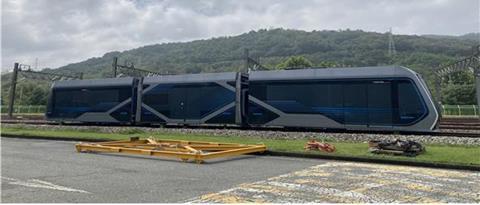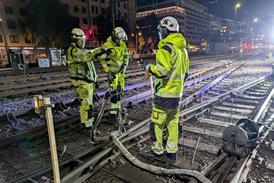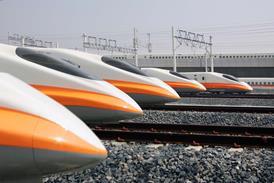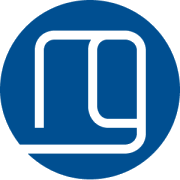
SOUTH KOREA: Domestically-developed articulation technology for low-floor trams has been produced by a consortium of Daejeon Transportation Corp, Hyunwoo Systems, Korea Testing Institute for Industrial Technology, Hyundai Rotem and Shinhyung E&G.
The project which aims to remove the need to import equipment began in April 2021, funded with 4·8bn won from the Ministry of Land, Infrastructure & Transport and 1·1bn won from the industrial partners.
Performance on sharp curves is to be assessed at a tram test facility established in the Oesam area of Daejeon, which is to be made available for use by domestic manufacturers and operators.
The tests will use a three-section hydrogen-powered tram developed by Hyundai Rotem and unveiled in April 2021; the company unveiled a second hydrogen tram in June this year. The test vehicle was delivered to Oesam in mid-September and more than 5 000 km of test running is planned by September 2024.
‘Through this research, we have developed key equipment and technology for the future tram Line 2 in Daejeon, which will be capable of operating on sharp curves’, said Cho Jong-hyun, Technical Director of DJTC. ‘By securing local production and in-house technology, we expect to improve competitiveness of tram vehicles with increased stability and the reduction of maintenance costs.’
Daejeon tram plan
The city of Daejeon is developing plans to build a 38·1 km light rail line. Designated Line 2, this would run in a loop around the city centre, with a one-stop branch in the southwest and a four-stop branch in the northeast. There would be a total of 45 stops, including five interchanges with metro Line 1.
Part of the alignment would be in tunnel.
The line would be entirely catenary-free, with either hydrogen vehicles, ground-level power suppliers or onboard energy storage being considered.
An increased budget of 1·4tr won for the project was approved by the government in April, and construction is now expected to start in the first half of next year.







